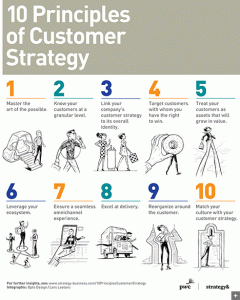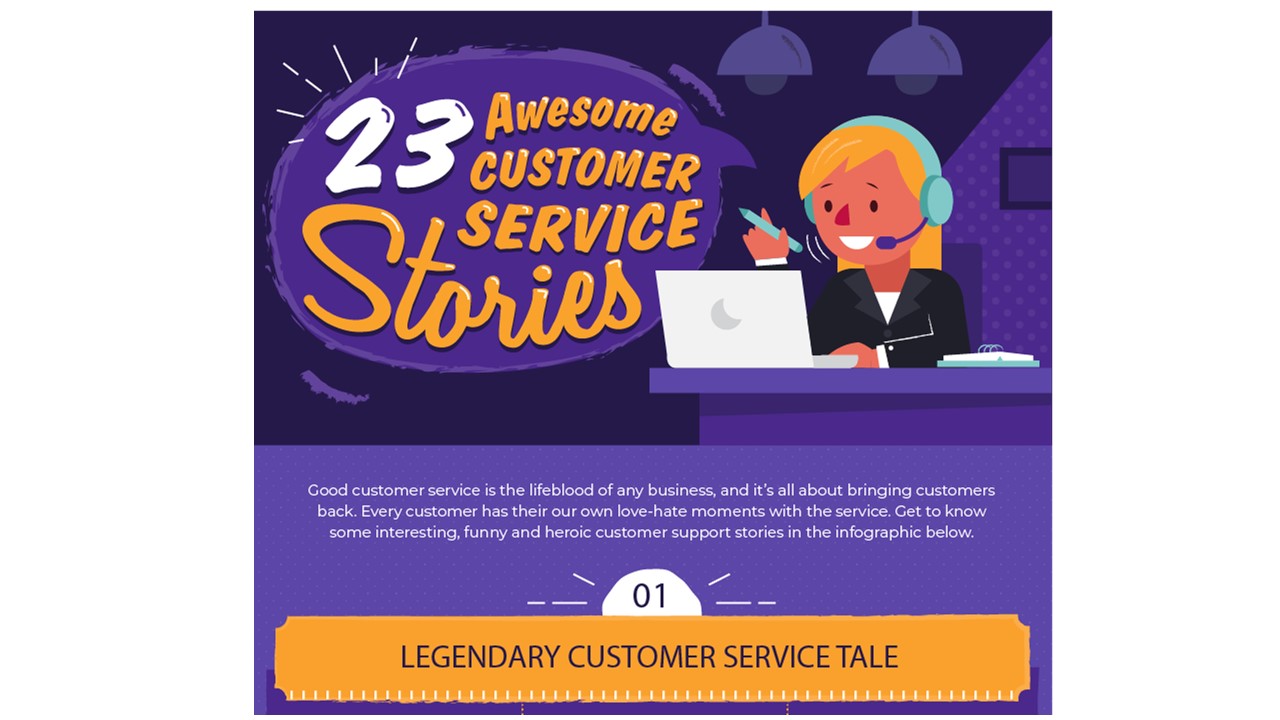It’s no longer enough to target your chosen customers. To stay ahead, you need to create distinctive value and experiences for them.
After losing the fourth major deal in a row to a rival, the CEO of a technology solutions company turned to his team leaders to ask what was going wrong. The sales team doesn’t have the right relationships, marketing reported. Our products lack key features, sales replied. The offerings are too expensive, finance explained. None of these answers seemed right. The products were made in the countries where manufacturing was cheapest, had high ratings from analysts, and included new features that people raved about. So the CEO finally called the client and bluntly asked: “Why did you give this deal to our competitor?”
The response: “Your products are great, but your competitor gives me what I’m looking for.” As they talked, the CEO realized that closing this deal — and other deals — didn’t come down only to product price, quality, features, or sales capabilities. The competitor spoke the language of the customer. Its salespeople knew how to anticipate the customer’s needs, work closely with its leaders, and come up with solutions to problems that hadn’t even been voiced yet. The CEO now saw that his company lacked a key ingredient necessary for serving its clients: a deliberate, well-designed, and perceptive customer strategy.
This real-life scenario is all too familiar. The conventional approach to gaining customers, which was based on picking a segment of purchasers to target and developing products for that segment, is no longer sufficient. A customer strategy goes further: It is the articulation of the distinctive value and experience your company will deliver to a chosen set of customers over three to five years, along with the offerings, channels, operating model, and capabilities you will need. In 2016 a team of researchers and advisors from the customer strategy practice at Strategy&, PwC’s strategy consulting group, conducted a global survey of 161 executives. And the findings indicated that having a customer strategy was high in importance. More than 80 percent of the respondents said their investment in customer strategy during the next three to five years would be equal to or greater than the amount invested this year.
In developing a successful customer strategy, you must provide answers to questions such as these: Who are our customers? Which of their needs can we address? Given our company’s overall value proposition and strategy, what customer experience should we create? What capabilities do we need in order to deliver that experience? How should we organize ourselves accordingly, and what aspects of our culture can help us?
A well-designed customer strategy will coordinate many different functions, skills, and practices. For example, it should encompass data analytics; go-to-market and channel choices; and the delivery of products, services, and experiences.Ten principles are at the heart of any effective customer strategy. These principles are universally applicable, regardless of what industry a company operates in, whether it focuses on a business or consumer clientele, where it does business, or what products and services it offers. Based on long-standing practice and observation — along with our survey and interviews with key players in eight industries — these principles show how companies can position themselves for customer success.

1. Master the art of the possible. Because technological breakthroughs are now common in nearly every industry, customers expect big changes to be a regular occurrence. The most successful companies continually experiment with innovations that make life better for customers. Customers appreciate companies that can do this effectively, time after time. That doesn’t mean asking your customers what they will find indispensable in the future; they can’t tell you. Consumers also don’t know what they want from new innovations, and they don’t always anticipate what will happen when they adopt them. They often know what they want only after they see it.
No one, for example, asked for ride-sharing apps before Uber appeared, followedby Lyft, Sidecar, BlaBlaCar, Haxi, and other similar services. Digital and mobile devices are now endemic to customer experience, and new kinds of apps (for example, for mobile payments) emerge regularly. No one knew these apps were indispensable until they were, suddenly, everywhere.
Therefore, when launching innovative products and services, develop your own informed judgment about technology. Carefully consider which new technologies will appeal to your customers at just the right time, in just the right way, so that customers become more loyal. This is particularly important for digital and mobile technologies, which continue to fundamentally alter the ways people interact with businesses and the types of products and services they favor.
There is a hefty risk management component to this principle. While you try to anticipate emerging technologies, others are doing the same. No one will get everything right; your ability to outpace your competitors depends on your cultivating better judgment, and then placing bet after bet, refining your acumen all the time. Not only do you have to decide what technologies will be most valued, but you have to know how far ahead of your customers to be, and you have to learn from every foray.
In our customer strategy survey, 40 percent of the respondents said that one of their top five priorities was mastering the art of the possible, particularly in digital and mobile technologies. Of these, 67 percent reported that they conducted regular assessments of digital and mobile technologies they might adopt or improve, but only 28 percent truly analyzed the financial impact of being early or late with their own innovations or those developed by others. The ability to analyze what you should bring to market and when will give you an edge, because better judgment relies on informed experimentation: trying new things at a reasonable scale, and paying enough attention to the results to be able to learn from each new launch.
Consider how Nest Labs, a maker of smart home devices owned by Alphabet, Google’s parent company, continually gains competitive advantage through its adroit use of technology. Nest takes ordinary home fixtures and makes them smart, beautiful, and energy efficient. For years, the marketing research at established companies found that consumers wouldn’t pay more than US$200 for a thermostat. But Nest developed a stylish, self-learning, and intuitive thermostat that could be controlled using a smartphone. After carving out a market by targeting the subsegment of highly educated, energy-conscious customers willing to pay the $249 list price, Nest began building an ecosystem of Internet-connected devices, including smoke detectors and security cameras. The company is now the leader in the smart thermostat market, which is expected to grow over the next several years and generate revenues of more than $1.3 billion by 2019, according to Sandler Research.
2. Know your customers at a granular level. Leading companies are moving beyond traditional quantitative segmenting. They’re developing much more sophisticated customer analysis that draws from a variety of sources, including customer behavior and psychographic data gathered online and offline, real-time information collected from sensors and other tracking mechanisms, and geographic and mapping data. Business leaders understand how critical this shift is. The executives we surveyed rated “segment and know your customers” as the second most important principle of developing a great customer strategy. (The first, “Link your company’s customer strategy to its overall identity,” is included as principle number three below.)
Many companies claim to have mastered this principle. Among the companies we surveyed that said customer insight was a top priority, 73 percent said their business had the capability in hand. Still, even at these organizations, there’s plenty of room for improvement. For example, only 46 percent said they regularly translate their customer knowledge into business platforms, actionable expansion plans, or new business models.
The most successful companies continually experiment with innovations that make life better for customers.
To raise your own customer analytics ability, start by thoroughly defining your market and customers. Deepen your knowledge by applying techniques such as mapping the customer journey. Seek out data from a variety of sources at the most granular level: for example, activity tracked by the Internet of Things, real-time interactions with your own Web and e-commerce sites, social media, and online communities such as customer advocacy councils. Use all of these, and more, to embed the voice of the customer in your decision making.
3. Link your company’s customer strategy to its overall identity. Every successful company has a strong value proposition that distinguishes it from rivals. It consistently offers something for its customers that no competitor can match. To deliver on this promise, it must develop and deploy a group of interrelated, distinctive capabilities. All of these must work together across the full portfolio of products and services. This combination of value proposition, capabilities, and offerings, when they all fit together in a coherent way, gives the company its identity. The company’s customer experience can be thought of as the visible edge of that identity: the way in which people interact with the company and learn to appreciate it.
It is more challenging than it may seem to develop a strong identity. Many businesses don’t truly know what they stand for, especially when they face so many outside influences and threats. Companies often find themselves playing defense, calibrating their value proposition against what rivals offer, instead of basing it on what they can do distinctively well.
Linking your customer strategy to your company’s value proposition goes beyond lining up the right processes from marketing, sales, and data analytics. It means aligning the emotional elements of your customer strategy, and all customer touch points including pricing, with the strongest capabilities your company has.
Apple has mastered this type of appeal. It offers customers a sense of superiority, grounded in an intuitive and productive experience and beautifully designed devices. Everything Apple does reinforces these attributes. It sticks to premium pricing and high margins, creating an association with status on which the company has refused to compromise — even when its sales slowed in fiscal year 2016. Its stores are spacious, open, and sophisticated, its website is sleek, its customer service is knowledgeable and savvy, and it doesn’t waste its customers’ time. Apple’s cultish fan base is a testimony to the emotional connection it builds by consistently delivering on its value proposition.
This principle requires a commitment from every part of the organization. If your company has many different groups that aren’t tightly connected or that can’t even agree on what they represent, you will need to bring them together around a common identity.
4. Target customers with whom you have the “right to win.” When your company has a strong identity, you don’t need to compete in every marketplace — only in the categories where you are reasonably confident of succeeding. Your value proposition will be consistent enough to appeal to a group of customers whom you can serve profitably. This is where you have the right to win — that is, a reasonable expectation that you can compete effectively against rivals.
If you try to grow your business where you don’t have the right to win, you risk investing time and resources on indifferent customers. You can and should branch out to other customers and markets. But those new customers and markets should be reachable with the same capabilities that gave you an edge with your base.
The Trader Joe’s grocery chain has a right-to-win customer strategy that provides a clear example of this principle. From the start, instead of trying to reach a mass market, the company built a devoted following by providing budget-friendly products for health- and diet-conscious shoppers. It caters exclusively to these consumers, working consistently to source and offer a tightly edited range of private-label, hard-to-find epicurean items. With $11.3 billion in sales and 457 stores in the U.S., Trader Joe’s sells more than twice what Whole Foods, its next biggest competitor, sells per square foot, and consistently tops the rankings for customer satisfaction.
5. Treat your customers as assets that will grow in value. Not every company cultivates long-term customer relationships in a constructive way. Leading companies do. They continually create better reasons for their customers to identify with the company and its products and services.
Building great customer relationships is a long-term game. It goes against many common practices, such as tracking the short-term return on customer acquisition investments. It even goes beyond quantifying the lifetime cost of a customer relationship, at either the individual or segment level, though that’s an important first step.
You can build on this quantitative understanding by analyzing your customers’ paths to purchase. This analysis gives you the insight you need to expand and tailor your customer relationships, investing in meeting the evolving needs of your customers. The results of this analysis, particularly when customer data is included, can affect every aspect of your customer relationships, including the emotional attributes of your brand and the consistency of your pricing.
Few companies treat customers as assets more effectively than Salesforce.com. The company disrupted the low end of the customer relationship management market by positioning its “Success. Not Software” advertising campaign against competitor Siebel’s higher-priced, more complex on-premise software applications. Salesforce.com created a platform that customers license on a subscription basis rather than buy. This powerful model, known as software-as-a-service (SaaS), allows customers to use software without a large up-front purchase, and Salesforce.com can regularly add features based on customers’ feedback. The company also offered training and certification programs that made customers a critical part of the branding and sales engine. Through this customer partnership, and by exploiting SaaS to meet clients’ needs as computer prices dropped, Salesforce.com redefined the software market.
To treat your customers as assets, you need clear accountability in your organization. When anyone who buys from you has a problem or complaint, there must be a way of resolving it and someone responsible for doing so. You also need a culture that motivates relationship building and joint problem solving — a partnership with the customer as opposed to transactional selling.
6. Leverage your ecosystem. Your company exists in a broad network of relationships that form an ecosystem. These relationships are not just with customers, but also with suppliers, distributors, retailers, industry associations, institutional partners, and government agencies. You can tap into this ecosystem to engage your customers in ways that go beyond what has been relevant to your business relationship in the past. A broad ecosystem can provide data your customers’ interests, thereby opening up ideas for new product and service offerings and growth opportunities.
Using the ecosystem is different from managing a value chain. You develop partners that can help spur innovation and more venues for going to market. They might also help win new customers for you by endorsing your brand.
Developing brand ambassadors is crucial to this approach — including some who work directly for you, some who work for other companies in your ecosystem, and still others among your customers. These advocates promote your brand to attract and win over new consumers. To be sure, you can’t control them the way you control your direct advertising and communications. However, with the right talent, training, and cross-organizational oversight, you can manage the risks and engage your customers through a far-reaching community that becomes central to your ecosystem. Companies such as Lego, Harley-Davidson, and BMW, whose enthusiastic customers communicate regularly with one another, successfully use this principle.
7. Ensure a seamless omnichannel experience. We all know the importance of omnichannel experience — a consistent look and feel in all customer touch points, including brick-and-mortar, face-to-face, online, voice phone, and mobile. Successful companies develop these channels using customer expectations, brand positioning, customer value, and cost-to-serve. They analyze the full cost and full set of benefits of each channel. The result is a seamless experience for the customer across every point of contact, so that shopping with an app feels reasonably similar to a face-to-face transaction.
Maintaining consistency across channels will be even more important during the next three to five years, because customers expect it. They count on being able to hop between call centers, websites, mobile apps, retail stores, and sales calls, getting the same experience at each stop. This raises the bar for every part of the organization — from product development to supply chain management.
The apparel startup Bonobos adapted its omnichannel approach after looking closely at its customers’ expectations. Initially, Bonobos’s ambitions were limited. It was a Web store designed to make it easy for male shoppers to find pants that fit. By chance, when the company opened a fitting room in its New York office, company leaders realized that although they could broaden their reach by letting customers see, touch, and try on apparel, most of the walk-in customers were not buying on impulse. Rather, they would come in to try on the clothes, and then order them later. The “guideshop” concept was born. Now shoppers book an appointment to try on clothes with the help of a stylist, or guide. The guide places the order, and the item is sent to the customer’s home from a warehouse. This multichannel strategy meets customers’ needs and streamlines costs because Bonobos doesn’t need stores that carry full inventories. The company is using a large part of the $55 million it has raised to open new guideshops.
8. Excel at delivery. The physical delivery of products and services is critical to keeping your customers happy. Whether or not you compete directly with Amazon, you are affected by its delivery innovations. These include recruiting individuals to do on-demand delivery, experimenting with drones, and signing up the U.S. Postal Service to handle Sunday deliveries. Customers now expect something similar to Amazon’s effectiveness from every company.
This is a daunting challenge. Amazon’s continually improved supply chain is designed to give it an edge. By managing its own inventory and that of third parties, Amazon gets volume discounts with shippers. Through co-locating small, dedicated distribution centers within key suppliers, such as Procter & Gamble, it lowers warehousing costs. By shipping a growing number of items using the Amazon freight network, it saves on shipping costs.
But you can emulate some aspects of Amazon’s practices, even if you don’t deliver nearly as high a proportion of merchandise directly. You can tailor delivery options on the basis of margin, brand positioning, and customers’ value expectations — while staying in step with technological advances. Data and analytics are the keys to these efforts. The use of relevant metrics, including customer experience, cost, and productivity, can help ensure high-quality delivery without sacrificing profitability.
9. Reorganize around the customer. Your organization should be “fit for your customer”: that is to say, it should be designed to make it easy to deliver a great customer experience. If you have already gone through the first eight principles, you should have a clear idea of your chosen customers, your identity, and your capabilities — and why these give you a right to win. Now redesign the organization accordingly. This might involve changing decision rights, shifting roles and responsibilities, establishing new teams, and aligning incentives, norms, and practices, always with your preferred customer groups and value proposition in mind. In other words, you may need to take the formal mechanisms and hierarchical structures of the existing company — your organizational DNA — and wire them differently.
Resist the temptation to adopt elements of agile development from technology companies and apply them to customer strategy. These elements include rapid mobilization on new projects (“sprint and scrum”), multidisciplinary teams, greater and faster information sharing, rapid decision making, and continuous collaboration and problem solving. Agility of this sort gives you flexibility, but it can also lead you to distracting, unprofitable endeavors. Don’t try to be agile just for the sake of being agile. Clearly articulate how these methods will help you develop a powerful customer strategy.
You also need to attract and retain the right talent. This means not only people with technological skills, but also those who understand customer experience and the practices needed to deliver it.
Many companies have instituted a chief customer officer (CCO) role. But quite often the CCO isn’t able to create the kind of customer-centric organization we’re talking about, because responsibility and accountability for customer strategy remains highly fragmented among sales, marketing, service, and other functions embedded in business units and geographies. Make sure your CCO (if you have one) directly or indirectly oversees every part of the organization that touches the customer’s experience.
10. Match your culture with your customer strategy. A relevant culture is a bigger advantage than ever for customer-facing companies. In our survey and interviews, a majority of executives said that the biggest barriers to a successful customer strategy were finding the right talent and developing the right organizational culture. Yet among companies that ranked meeting customer expectations as one of their top priorities in our survey, just 51 percent said they used culture as an accelerant and a differentiator.
Keeping your culture vibrant takes diligence. You might feel that your embedded cultural inhibitors hold you back. Veteran managers may mistrust the social collaboration tools that younger and more digitally adept employees use freely. The rank and file may be skeptical about the cultural changes you are trying to implement.
Don’t try to fix these problems directly; instead, focus on the few critical behaviors that exist in your organization in which people are doing well for their customers. These might include mobilizing a cross-functional team to help a customer solve a particular problem quickly, saying no to a potential deal with a customer with whom you don’t have a right to win, or starting each meeting by explicitly asking how the topic under discussion is relevant to the customer strategy. Then help spread these behaviors through the rest of the company, in part by explaining why these behaviors matter.
You may also need to lead by following — becoming a visible master of these behaviors yourself — while cultivating advocates among employees. Keeping a culture moving forward is one of the hardest tasks companies take on, which is why many don’t evolve.
Customer-Oriented Leaders
The 10 principles we’ve laid out are familiar to many companies. But few companies consistently practice them with the level of finesse that’s called for.
What, then, should you as a C-level or senior executive do? First, check your current customer strategy and see to what extent all 10 principles are addressed. Rather than just focusing on one or two measures, such as annual sales, incremental sales, market share, or return on investment, establish a scorecard that captures several of these dimensions. Then conduct a qualitative assessment of what your company does well and poorly. As you adjust your practices, focus on a clear identity. If everything you do makes sense in a coherent way, you can build customer relationships that help your business thrive.
Credit: Thomas Ripsam is an advisor to executives with Strategy&, PwC’s strategy consulting business. A principal with PwC US, he is based in Florham Park, N.J., where he leads the customer strategy team. His areas of specialty include operating model design and transformation strategies for clients in the technology, information, communications, entertainment, consumer, and retail industries.
Louis Bouquet is a thought leader with Strategy& based in New York. He is a director with PwC US. He focuses on customer strategy and transformation for technology clients.
John Brown, a specialist in the retail and consumer product sectors at Strategy&, also contributed to this article. He is a director with PwC US.
Report originally appeared in Strategy& || PwC’s Strategy Consulting business blog









